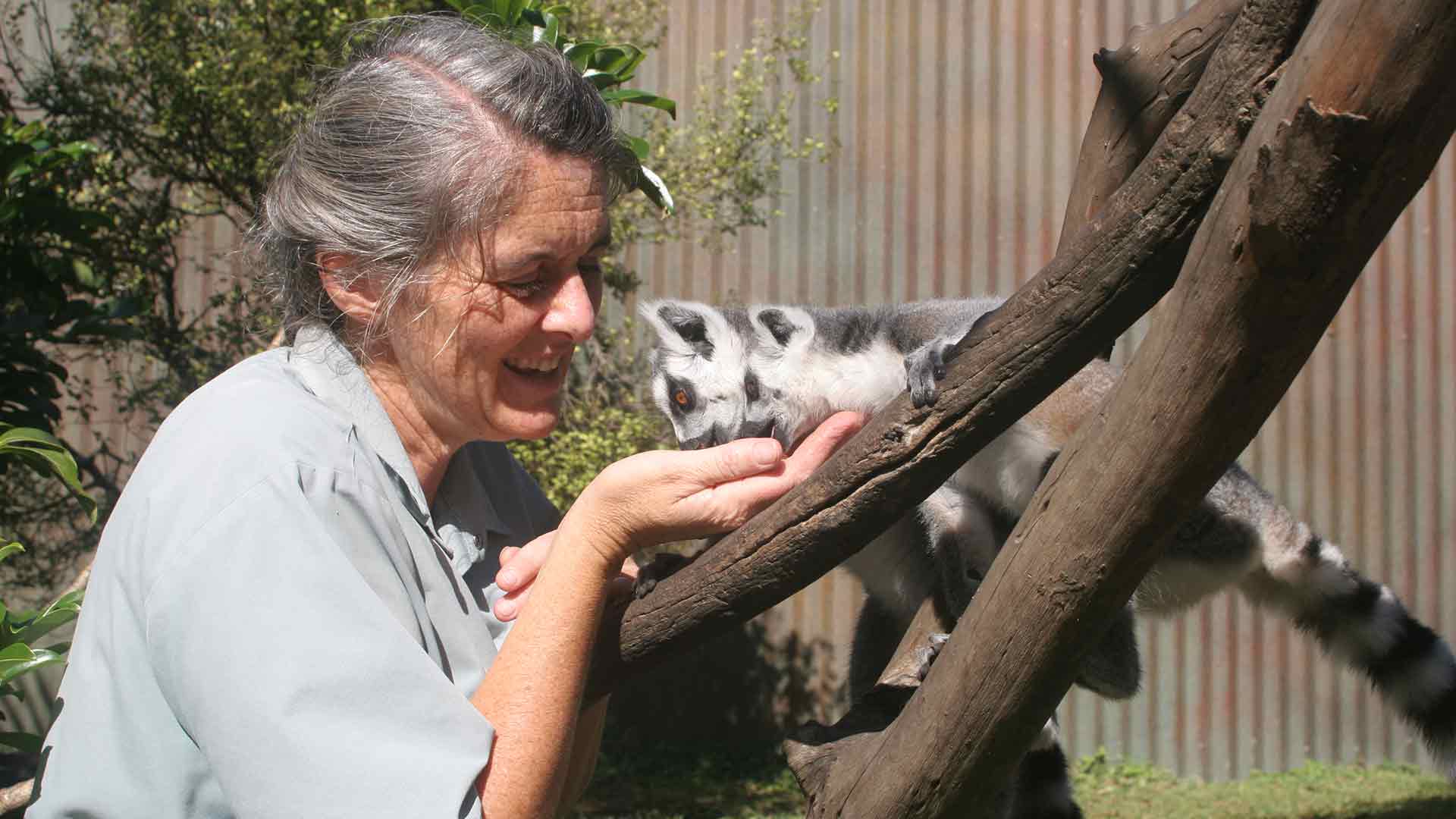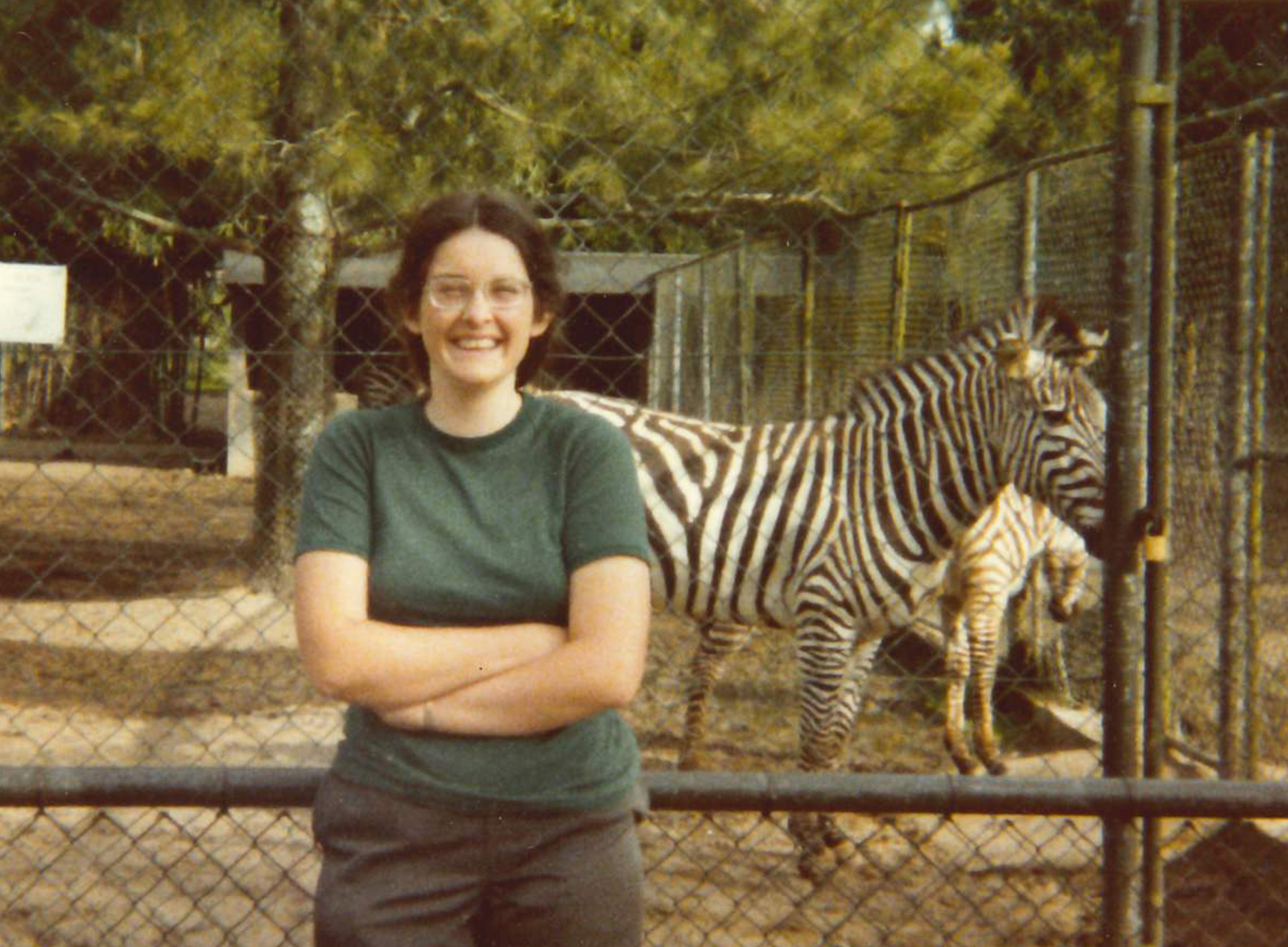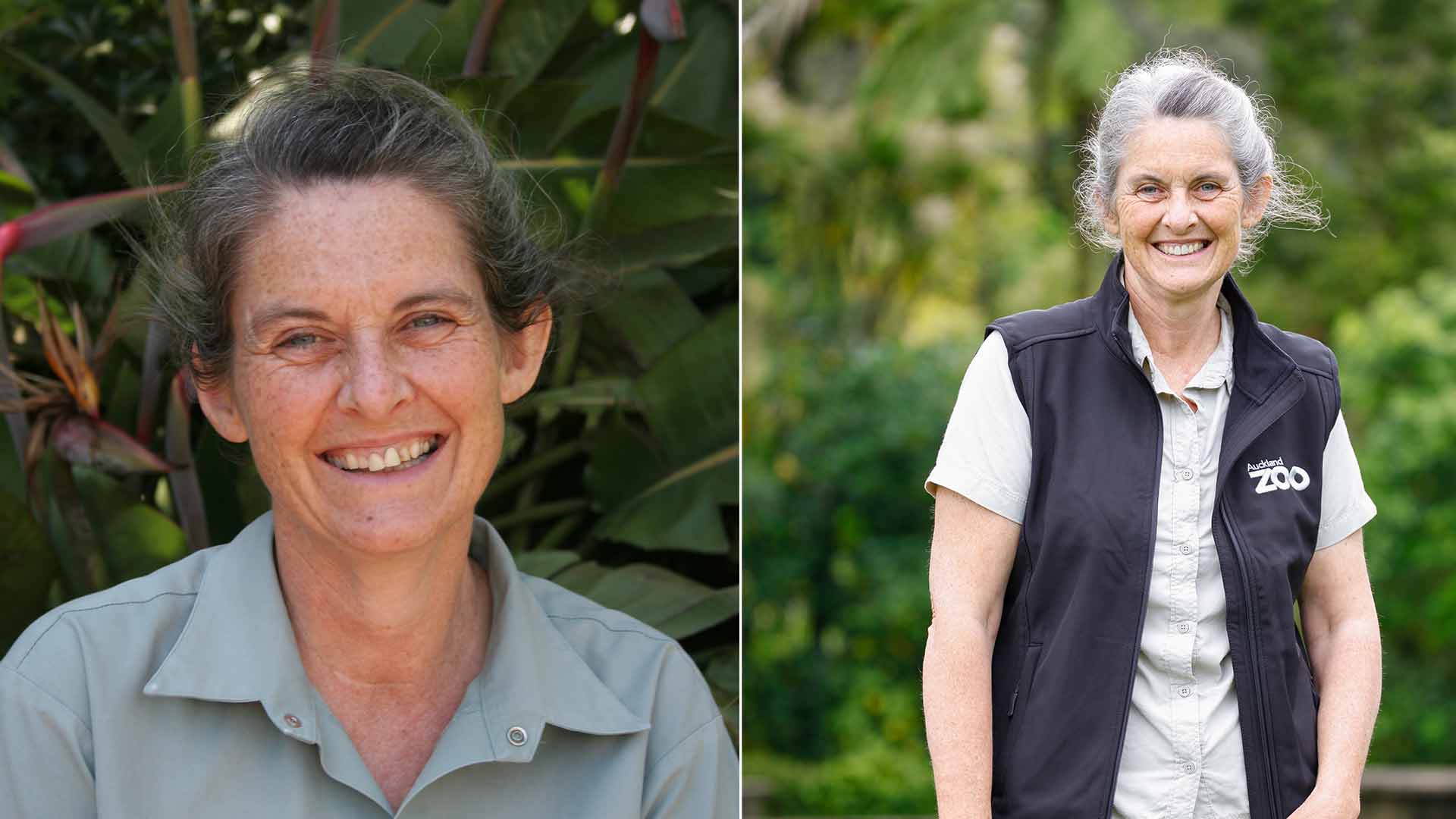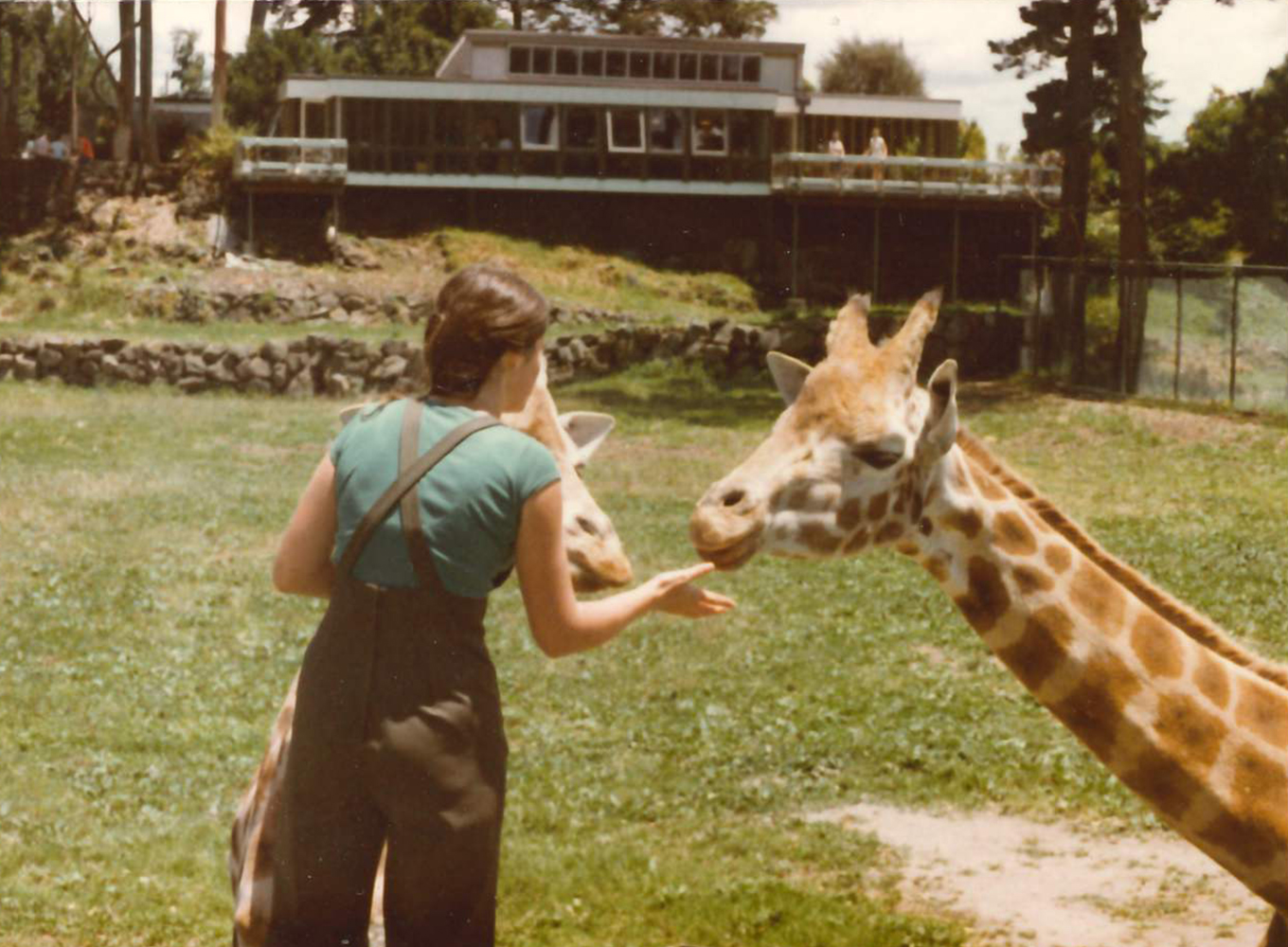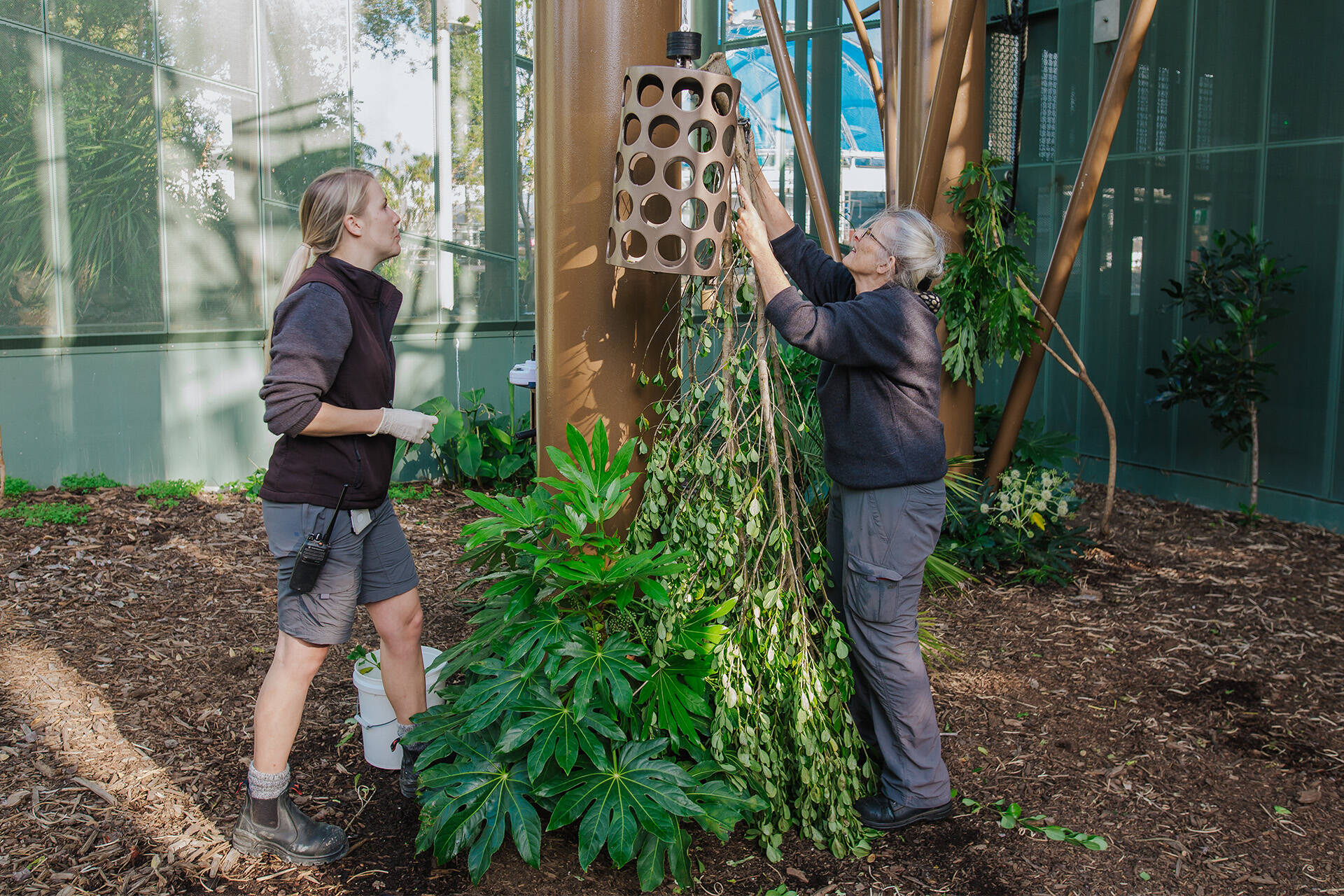“I’m leaving the Zoo, but the Zoo isn’t leaving me,” says senior primate keeper Christine Tintinger, who is retiring today after a remarkable 44-year career at Auckland Zoo that she began in 1979 as one very excited 21-year-old.
Over her many thousands of days as a keeper, Christine has given her all (and more!), fulfilling a childhood dream to work with animals (primarily primates) from around the world and sharing her passion for wildlife and the environment. (Some Auckland Zoo fans may remember Christine as a regular on the Zoo’s original and hugely popular 1999-2012 television series ‘The Zoo,’ which screened here in Aotearoa and in millions of homes overseas).
The now 65-year-old’s young dream was heavily influenced by the books she devoured by world-renowned zookeeper, naturalist and conservationist, the late Gerald Durrell, a champion of scientific research to advance animal care in zoos and help wildlife in the wild.
“When I first approached the Zoo for a job in 1977 just out of 7th Form at Epsom Girls Grammar, then curator Graham Meadows could see how keen I was, but wisely advised me to go and gain some life experience first! Working with children was always my backup option, so I trained in and worked as a Karitane nurse, helping care for new mothers and their babies. I also enrolled in the animal-care course that Graham and Richard Elliot set up at the Auckland Institute of Technology (now Auckland University of Technology) and would come into the Zoo on my days off to do animal observations.”


